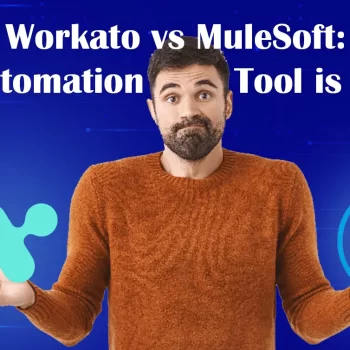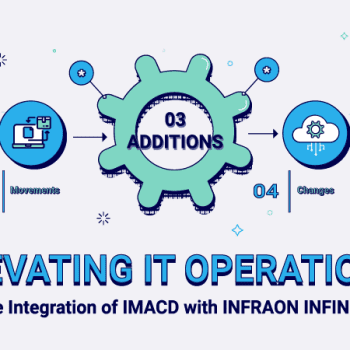The IT ecosystem has seen unprecedented changes in recent years. With the advent of cloud computing, distributed architectures, and continuous technological innovations, managing and delivering ITSM efficiency has become complex. This complexity has made the collaboration between IT managers and ITSM Managed Services Providers (MSPs) increasingly crucial.
Related blog: How MSPs play an invaluable role in Professional Service Automation
Let’s start exploring how such collaboration can lead to enhanced ITSM.
Understanding the Modern ITSM Challenges with ITSM Managed Services
Rapid technological evolution
The IT field is advancing at a breakneck pace, with new technologies emerging continuously. For IT managers and MSPs, this means constantly adapting and integrating these advancements into existing systems. The challenge lies in adopting these new technologies and ensuring they seamlessly integrate with and enhance current systems without disrupting ongoing operations. It requires a keen understanding of both emerging tech and legacy systems to create a cohesive IT environment.
Complex infrastructure management
Modern IT infrastructures are a blend of old and new technologies. This creates a unique challenge in management, as each component – from legacy systems to the latest cloud solutions – has its own requirements. Managing such diverse infrastructures demands extensive flexibility. IT managers and MSPs must navigate these complexities, ensuring each part of the infrastructure works and supports the broader business objectives.
Security risks
Cybersecurity is an ever-growing concern, with new threats emerging daily. Keeping IT environments secure, therefore, is a daunting task. It requires vigilance, advanced security measures, and a proactive approach to risk management. IT managers and MSPs need to stay ahead of potential threats, implement robust security protocols, and continuously monitor for vulnerabilities.
Regulatory compliance
The IT sector is subject to regulations that vary by region and industry. These laws and regulations are continually evolving, adding a layer of complexity to IT operations. Compliance is also crucial for maintaining customer trust and avoiding penalties. Navigating these regulatory waters requires a thorough understanding of the relevant laws, a strategy for compliance, and the agility to adapt to new regulations as they arise.
Understanding how IT managers and MSPs overcome ITSM challenges
From the perspective of IT managers
At the heart of any organization’s strategy, IT managers are important in aligning IT services with business objectives. In facing rapid technological evolution, they play a role in discerning which new technologies fit into the company’s strategy and can be seamlessly integrated into the existing systems.
They help manage the complexity of mixed IT infrastructures, balancing the need to maintain legacy systems with the integration of cutting-edge solutions. In terms of security risks, IT managers are on the frontline, developing and enforcing robust security protocols and continually assessing the IT landscape for vulnerabilities.
Additionally, they navigate the maze of regulatory compliance, ensuring that all IT operations adhere to relevant laws and standards, thus safeguarding the organization from legal repercussions and maintaining customer trust.
From the perspective of MSPs
MSPs bring a wealth of specialized expertise that perfectly complements the role of IT Managers. In areas like cloud services, cybersecurity, and data analytics, they provide invaluable external support and resources. Their broad perspective on technology trends and best practices is crucial in helping organizations adapt to rapid changes.
MSPs often have the tools and skills to manage complex, distributed IT infrastructures, providing the agility and scalability that modern businesses require. In cybersecurity, MSPs offer advanced threat detection and response capabilities, enhancing the organization’s defense against emerging cyber threats.
Also, their experience across various industries and regulatory environments makes them ideal partners in navigating and adhering to complex compliance requirements.
Together, IT managers and MSPs form a dynamic team capable of addressing the myriad challenges in modern ITSM. Their collaboration leads to a more resilient, agile, and compliant IT operation, capable of only responding to current challenges and proactively preparing for future technological shifts.
Collaboration Strategies between IT Managers and MSPs to deliver ITSM Efficiency
Using shared ITSM tools
The foundation of a successful collaboration between IT managers and MSPs lies in the use of shared ITSM tools. These tools, encompassing incident management, service requests, and reporting, are vital for maintaining seamless operations. By implementing common platforms, both parties can ensure real-time updates, uniform processes, and transparent communication.
This approach streamlines workflow and minimizes the chances of miscommunication and errors. Shared tools foster a unified working environment where information flows smoothly, and response times to IT issues are significantly improved.
Holding regular strategic meetings
Collaboration is rooted in clear and consistent communication. Regular strategic meetings between IT managers and MSPs are crucial for aligning goals and strategies. These meetings offer a platform to discuss ongoing projects, tackle challenges, and plan for future initiatives. They serve as an opportunity to align the MSP’s external perspective with the internal goals of the organization.
Frequent interactions help in building a strong rapport and understanding, ensuring that both parties are working towards a common objective and adapting to evolving business needs.
Joint training and knowledge sharing
Joint training sessions and knowledge-sharing initiatives play a key role in this aspect. Such collaborative learning environments enable both IT managers and MSPs to stay abreast of new developments and sharpen their skills. This shared learning approach enhances the team’s competency while incubating a culture of continuous improvement and innovation. It encourages the sharing of best practices and experiences, leading to more informed decision-making.
Interested in knowing about how to achieve ITSM efficiency? Visit: www.infrao.io



















